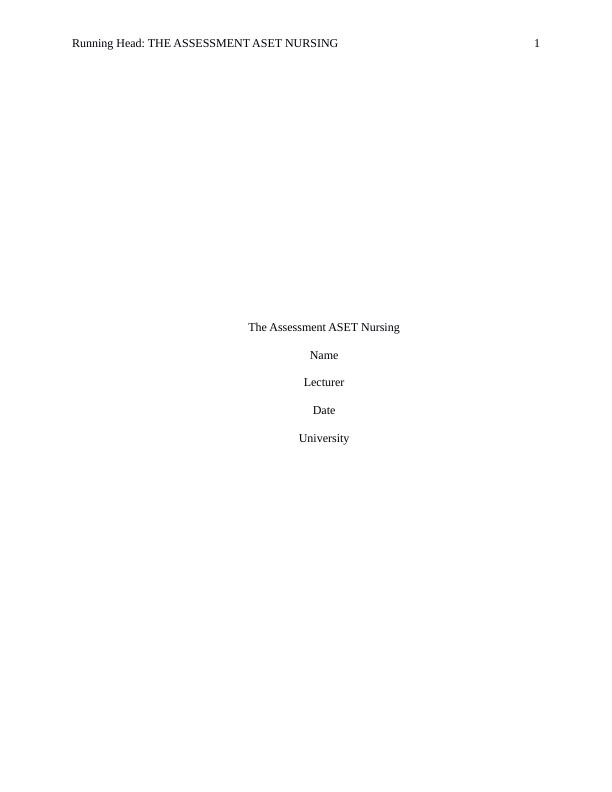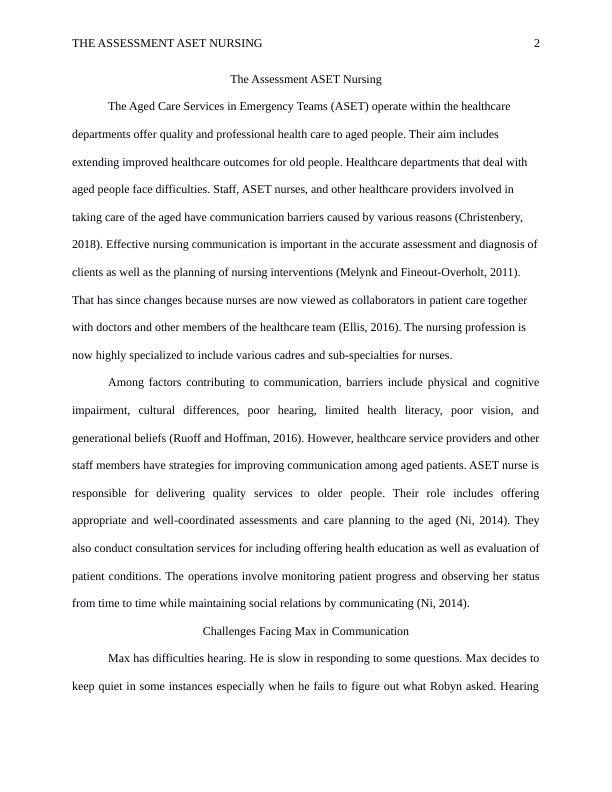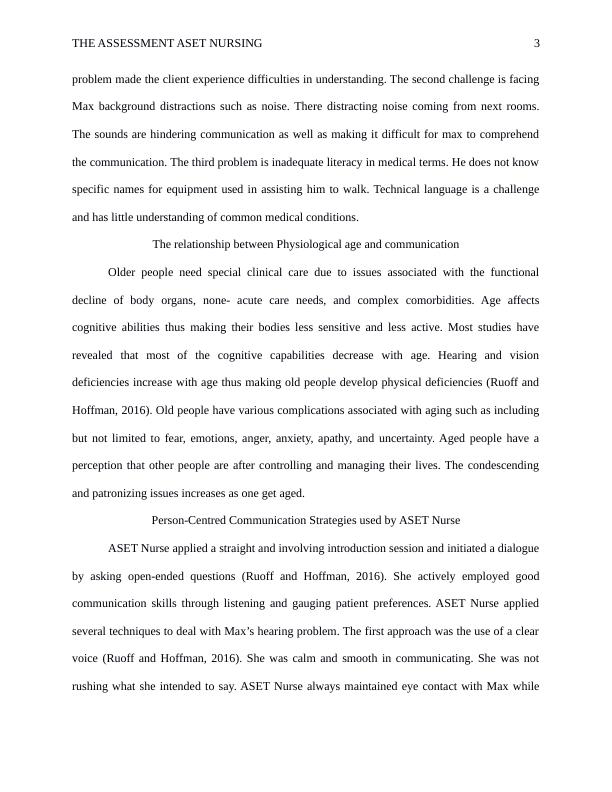The Assessment ASET Nursing - Communication, Assessment Process, and Strengths-based Nursing
Analyzing the communication and assessment process of an older man in an emergency department, and discussing the impact of physiological age-related changes on his ability to communicate effectively.
11 Pages2604 Words385 Views
Added on 2023-06-07
About This Document
This article discusses the challenges faced by ASET nurses in communication with aged patients, the assessment process of old people, and the principles of strengths-based nursing. It also highlights the areas of assessment inadequately assessed in the video.
The Assessment ASET Nursing - Communication, Assessment Process, and Strengths-based Nursing
Analyzing the communication and assessment process of an older man in an emergency department, and discussing the impact of physiological age-related changes on his ability to communicate effectively.
Added on 2023-06-07
ShareRelated Documents
End of preview
Want to access all the pages? Upload your documents or become a member.
Nursing Care Plan Assignment (Doc)
|9
|2558
|300
Nursing Assessment Critique: Communication and Assessment of an Older Patient
|8
|2311
|122
Critique of Nursing Assessment Essay
|7
|1940
|344
Aged Care Services in Emergency Team (ASET) Nurse Interviewing Max: A Critique and Analysis
|10
|2586
|271
Business and Management Sample Assignment
|12
|2429
|275
Case Study on Nursing Assessment
|12
|3362
|429




